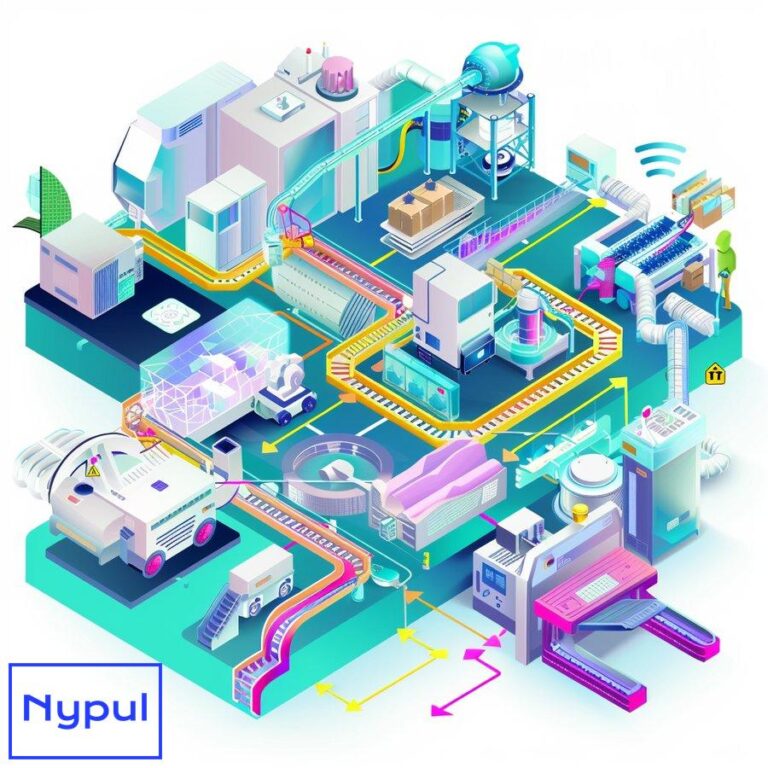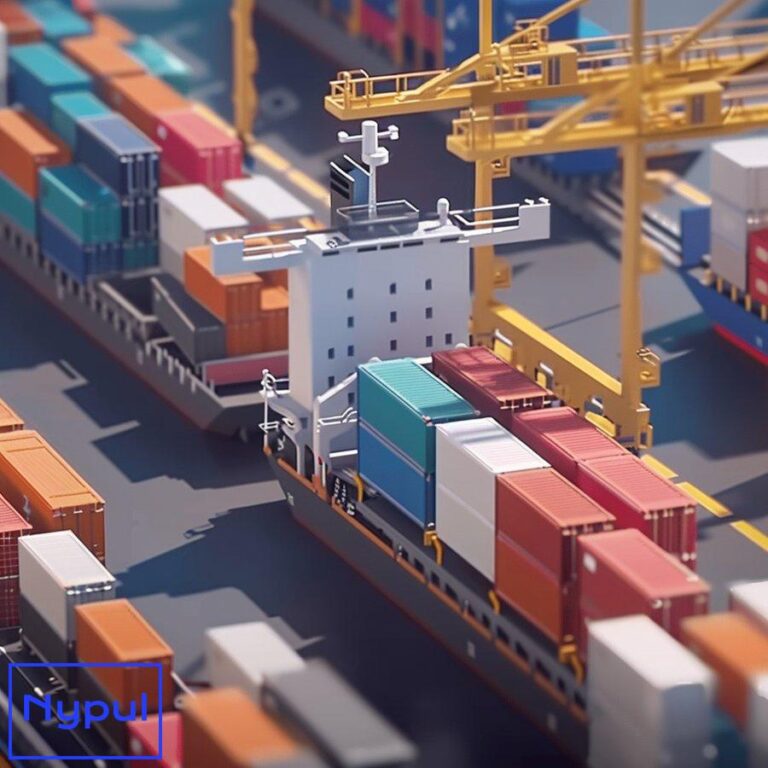What Would Be Considered Local Delivery
What are the typical distance parameters for local delivery?
Local delivery typically operates within a limited geographical area, usually defined by a radius around a central point such as a store or warehouse. The exact distance parameters can vary depending on factors like population density, road infrastructure, and the nature of the goods being delivered.
In urban areas, local delivery often covers a radius of 5 to 15 miles. This allows for quick and efficient delivery to customers within the same city or metropolitan area. For example, a restaurant offering local food delivery might limit its service area to a 5-mile radius to ensure hot meals arrive promptly.
Rural areas may have larger local delivery radii, sometimes extending up to 50 miles or more. This accounts for the greater distances between towns and the lower population density. A farm supplying fresh produce to nearby communities might consider a 30-mile radius as local delivery.
Some businesses define local delivery based on political boundaries like city limits or county lines. This makes it easy for customers to understand the service area and for the business to manage logistics within a defined region.
Factors Influencing Local Delivery Distance
Several factors can influence the distance parameters for local delivery:
- Population density: In highly populated urban areas, a smaller delivery radius is more practical due to traffic congestion and the concentration of customers.
- Road infrastructure: Well-developed road networks allow for faster travel times, enabling a larger local delivery area.
- Nature of goods: Perishable or time-sensitive items like food or flowers may require a smaller delivery radius to maintain quality and freshness.
- Delivery vehicle type: The type of vehicle used for delivery can impact the feasible distance. Bicycles or scooters are suitable for shorter distances, while cars or vans can cover larger areas.
Ultimately, the distance parameters for local delivery are defined by the specific needs and constraints of each business and its customers. By carefully considering these factors, businesses can determine the optimal local delivery radius to provide efficient and reliable service.
How do time constraints define local delivery services?
Time constraints play a crucial role in defining local delivery services. Customers often expect fast and reliable delivery when ordering goods locally, and businesses must structure their operations to meet these expectations.
Same-Day Delivery
One of the most common time constraints in local delivery is same-day service. This means that orders placed by a certain cutoff time will be delivered on the same day. Same-day delivery is particularly popular for items like groceries, meals, and urgent supplies.
To accommodate same-day delivery, businesses must have efficient order processing, inventory management, and dispatch systems in place. They may also need to limit the size of their delivery area to ensure that drivers can complete all deliveries within the designated timeframe.
Scheduled Delivery Windows
Another time constraint in local delivery is the use of scheduled delivery windows. This allows customers to choose a specific time slot for their delivery, such as “between 2 pm and 4 pm”. Scheduled delivery windows provide customers with greater convenience and flexibility, as they can plan their day around the expected delivery time.
To offer scheduled delivery windows, businesses need to have robust scheduling and route optimization systems. They must carefully coordinate driver schedules and routes to ensure that deliveries are made within the promised time slots.
Rush or Express Delivery
Some local delivery services offer rush or express options for customers who need their items as quickly as possible. This might involve prioritizing certain orders for immediate processing and dispatch or using dedicated express delivery vehicles.
Rush or express delivery often comes with a higher fee, as it requires additional resources and disrupts regular delivery schedules. However, it can be a valuable service for customers with urgent needs.
Balancing Speed and Cost
Time constraints in local delivery must be balanced against operational costs and efficiency. Offering faster delivery options may require more delivery vehicles, drivers, and support staff, which can increase expenses. Businesses must carefully assess customer demand and willingness to pay for expedited service when defining their local delivery time constraints.
By setting clear time constraints and communicating them effectively to customers, businesses can differentiate their local delivery services and build customer loyalty. Reliable and fast delivery is increasingly becoming a key factor in customer purchasing decisions, making it essential for businesses to prioritize and optimize their local delivery operations.
What types of local delivery services are available?
Local delivery services come in various forms, each catering to different customer needs and preferences. Some common types of local delivery services include:
Food Delivery
One of the most popular types of local delivery is food delivery. This includes meals from restaurants, groceries from supermarkets, and even fresh produce from local farms. Food delivery services have grown rapidly in recent years, driven by the convenience they offer consumers.
Platforms like Grubhub, DoorDash, and Uber Eats have made it easy for customers to order meals from their favorite restaurants and have them delivered directly to their doorstep. Many supermarkets and grocery stores also now offer local delivery services, allowing customers to shop online and receive their groceries at home.
Retail Delivery
Another common type of local delivery is retail delivery. This involves the delivery of goods purchased from local stores, such as clothing, electronics, home goods, and more. Many retailers now offer local delivery options to compete with online marketplaces and provide added convenience to customers.
Retail delivery can be particularly useful for large or bulky items that are difficult for customers to transport themselves. Furniture stores, appliance retailers, and home improvement centers often provide local delivery services for this reason.
Courier Services
Local courier services provide fast and reliable delivery of packages, documents, and other items within a defined geographical area. These services are often used by businesses that need to send urgent or sensitive materials to local clients or partners.
Courier services can offer a range of delivery options, from standard same-day delivery to express or rush services. They may use various modes of transportation, including cars, bikes, or even on foot for hyper-local deliveries.
Prescription Delivery
Local pharmacies increasingly offer prescription delivery services to help patients receive their medications without having to visit the store in person. This can be especially beneficial for elderly, disabled, or chronically ill patients who may have difficulty leaving their homes.
Prescription delivery services ensure that patients receive their medications securely and on time, often with the option for scheduled or recurring deliveries.
Specialized Delivery Services
Some local delivery services focus on specific niches or specialized items. For example, there are local delivery services that cater exclusively to pet supplies, office supplies, or even alcohol.
These specialized delivery services often have unique expertise and capabilities that allow them to handle the specific requirements of their chosen niche. For example, a local alcohol delivery service may have special procedures for verifying the age of recipients and ensuring compliance with local regulations.
As consumer demands for convenience and speed continue to grow, the range of available local delivery services is likely to expand further. Businesses that can identify and cater to specific customer needs through specialized and efficient local delivery will be well-positioned to succeed in this evolving landscape.
How does local delivery differ from standard shipping?
Local delivery and standard shipping are two distinct methods of transporting goods to customers, each with its own characteristics and advantages. Understanding the differences between these two methods is crucial for businesses to make informed decisions about their delivery operations and for customers to choose the best option for their needs.

Speed
One of the main differences between local delivery and standard shipping is speed. Local delivery is typically much faster than standard shipping, as it covers a smaller geographical area and often uses more direct routes.
With local delivery, customers can often receive their items on the same day or within a few hours of placing an order. This is particularly valuable for time-sensitive goods like food, medications, or urgent supplies.
In contrast, standard shipping often involves longer distances and may rely on complex transportation networks, resulting in longer delivery times. Depending on the shipping method and destination, standard shipping can take anywhere from a few days to several weeks.
Cost
Another key difference between local delivery and standard shipping is cost. Local delivery is often more affordable than standard shipping, especially for smaller items or short distances.
This is because local delivery providers can optimize their routes and consolidate multiple orders within a compact area, reducing transportation costs. They may also use more cost-effective vehicles like bikes or scooters for hyper-local deliveries.
Standard shipping, on the other hand, can be more expensive due to the longer distances involved and the need for more extensive infrastructure and logistics. Shipping costs may also vary based on factors like package weight, dimensions, and delivery speed.
Flexibility
Local delivery often offers greater flexibility compared to standard shipping. With local delivery, customers may have the option to choose specific delivery windows, track their orders in real-time, or even communicate directly with the delivery driver.
This level of flexibility is possible because local delivery operates within a smaller, more manageable area, allowing for greater control and customization of the delivery experience.
Standard shipping, while offering some tracking and communication options, typically involves less direct interaction between the customer and the delivery provider. Customers may have limited control over delivery times and may need to rely on estimated delivery windows provided by the shipping carrier.
Environmental Impact
Local delivery can have a lower environmental impact compared to standard shipping. By consolidating orders and optimizing routes within a compact area, local delivery providers can reduce the overall distance traveled and minimize fuel consumption.
Additionally, local delivery often uses more eco-friendly transportation options like bikes, electric vehicles, or even foot delivery for short distances. This reduces carbon emissions and contributes to cleaner air in local communities.
Standard shipping, especially over long distances, can have a larger carbon footprint due to the reliance on planes, trucks, and other fuel-intensive transportation methods. However, some shipping carriers are taking steps to reduce their environmental impact through initiatives like electric vehicle fleets and carbon offset programs.
Ultimately, the choice between local delivery and standard shipping depends on factors like the urgency of the delivery, the distance involved, and the specific needs of the customer. By understanding the differences between these two methods, businesses can make strategic decisions about their delivery operations, while customers can select the option that best suits their requirements.
What role does technology play in local delivery operations?
Technology has revolutionized local delivery operations, enabling businesses to streamline processes, improve efficiency, and enhance the customer experience. From order placement to delivery tracking and beyond, technology plays a crucial role in every aspect of local delivery.
![]()
Online Ordering Platforms
One of the most significant technological advancements in local delivery is the rise of online ordering platforms. These platforms allow customers to easily browse products, place orders, and make payments from their computers or mobile devices.
For businesses, online ordering platforms provide a centralized system for managing orders, updating inventory, and communicating with customers. They can also integrate with other software systems, such as point-of-sale (POS) systems and inventory management tools, to streamline operations and reduce manual data entry.
Route Optimization Software
Route optimization software is another key technology in local delivery operations. This software uses algorithms to calculate the most efficient routes for delivery drivers, taking into account factors like traffic patterns, road closures, and customer delivery windows.
By optimizing routes, businesses can reduce fuel consumption, minimize delivery times, and increase the number of deliveries completed per driver. This not only improves operational efficiency but also enhances the customer experience by ensuring timely and reliable deliveries.
Real-Time Tracking and Communication
Technology has also enabled real-time tracking and communication in local delivery operations. With GPS-enabled devices and mobile apps, customers can track their orders in real-time, receiving updates on the estimated delivery time and the location of the delivery driver.
This transparency helps to build trust and confidence in the delivery process, as customers can see exactly where their orders are and when they can expect to receive them. Real-time tracking also allows businesses to monitor driver performance, identify any issues or delays, and proactively communicate with customers if needed.
Automated Dispatch and Driver Management
Automated dispatch and driver management systems are another important technology in local delivery operations. These systems use algorithms to assign orders to drivers based on factors like location, capacity, and delivery deadlines.
By automating the dispatch process, businesses can reduce the time and effort required to manually assign orders, while also ensuring that deliveries are made in the most efficient and cost-effective manner. Driver management systems can also track driver performance, monitor vehicle maintenance schedules, and ensure compliance with safety regulations.
Data Analytics and Insights
Technology also enables businesses to collect and analyze vast amounts of data related to their local delivery operations. This data can include information on order volumes, delivery times, customer preferences, and more.
By leveraging data analytics tools and techniques, businesses can gain valuable insights into their delivery operations, identifying areas for improvement and making data-driven decisions to optimize performance. For example, data analysis might reveal that certain delivery zones consistently experience delays, prompting the business to adjust routes or allocate additional resources to those areas.
Emerging Technologies
Looking to the future, emerging technologies like autonomous vehicles and drones may further transform local delivery operations. Autonomous delivery vehicles could potentially reduce labor costs, increase delivery speeds, and improve safety by removing human error from the equation.
Similarly, drone delivery could enable businesses to reach customers in hard-to-access areas or deliver items even faster than traditional ground-based methods. While these technologies are still in the early stages of development and face regulatory hurdles, they highlight the ongoing role of innovation in shaping the future of local delivery.
As technology continues to advance, businesses that embrace and integrate these tools into their local delivery operations will be well-positioned to meet evolving customer demands, improve operational efficiency, and maintain a competitive edge in the market.
What are the key challenges in providing local delivery services?

While local delivery offers numerous benefits to businesses and customers, it also presents several challenges that must be addressed to ensure successful operations. These challenges can impact the efficiency, profitability, and customer satisfaction of local delivery services.
Last-Mile Delivery Costs
One of the most significant challenges in local delivery is the cost of last-mile delivery. The last mile refers to the final leg of the delivery journey, from the local distribution center or store to the customer’s doorstep. This stage of delivery is often the most expensive and time-consuming, as it involves navigating complex urban environments, dealing with traffic congestion, and making multiple stops.
To mitigate last-mile delivery costs, businesses must optimize their routing and scheduling, consolidate orders where possible, and invest in technologies that streamline the delivery process. Some businesses may also explore alternative delivery methods, such as partnering with local delivery providers or using crowdsourced delivery platforms.
Managing Peak Demand
Another challenge in local delivery is managing peak demand periods. Certain times of the day, week, or year may see a surge in delivery orders, such as during mealtimes for food delivery services or during the holiday season for retail deliveries.
During these peak periods, businesses must have the capacity and resources to handle the increased volume of orders without compromising delivery speed or quality. This may require hiring additional delivery staff, expanding vehicle fleets, or implementing more efficient order processing and dispatch systems.
Ensuring Timely and Accurate Deliveries
Customers have high expectations for local delivery services, particularly when it comes to timeliness and accuracy. Late or incorrect deliveries can lead to customer frustration, negative reviews, and lost business.
To ensure timely and accurate deliveries, businesses must have robust order tracking and communication systems in place. This includes providing customers with real-time updates on their order status, estimated delivery times, and any potential delays. Businesses must also train delivery staff to follow proper protocols for order handling, verification, and customer interaction.
Navigating Urban Logistics
Local delivery services often operate in dense urban environments, which can present unique logistical challenges. These challenges may include limited parking options, restricted access to certain buildings or neighborhoods, and navigating one-way streets or pedestrian-only zones.
To overcome these urban logistics challenges, businesses must develop detailed delivery plans that account for the specific constraints of each delivery area. This may involve partnering with local authorities to secure parking permits, using smaller delivery vehicles that can navigate tight spaces, or exploring alternative delivery methods like bike or foot couriers.
Ensuring Driver Safety and Well-Being
The safety and well-being of delivery drivers is another key challenge in local delivery operations. Delivery drivers may face risks such as traffic accidents, theft, or physical strain from lifting and carrying heavy packages.
To address these concerns, businesses must prioritize driver safety training, provide appropriate equipment and resources, and implement policies that promote a healthy work environment. This may include investing in ergonomic delivery bags, providing safety gear like reflective vests, and ensuring that drivers have adequate rest breaks and support.
Balancing Speed and Sustainability
As consumers increasingly prioritize sustainability, local delivery services must find ways to balance the demand for fast, convenient delivery with the need to reduce environmental impact. This can be a challenging balancing act, as faster delivery often relies on more frequent trips and potentially more packaging waste.
To address this challenge, businesses can explore eco-friendly delivery options like electric vehicles, bike couriers, or reusable packaging materials. They may also incentivize customers to choose slower but more sustainable delivery options, such as consolidating multiple orders into a single delivery or selecting a wider delivery window.
By proactively addressing these challenges and continually adapting to the evolving needs of customers and the market, businesses can build successful and sustainable local delivery operations that drive growth and customer loyalty.
What are the benefits of offering local delivery for businesses?
Offering local delivery services can provide numerous benefits for businesses, helping them to expand their customer base, increase sales, and build a competitive advantage in the market. As consumer demands for convenience and speed continue to grow, local delivery has become an increasingly important part of many businesses’ strategies.
Increased Customer Reach and Sales
One of the primary benefits of offering local delivery is the potential to increase customer reach and sales. By providing a convenient delivery option, businesses can attract customers who may not have otherwise visited their physical store or restaurant.
Local delivery allows businesses to expand their customer base beyond their immediate vicinity, reaching consumers who may have been limited by distance or mobility constraints. This can be particularly valuable for businesses located in areas with high competition or limited foot traffic.
By offering local delivery, businesses can also encourage customers to make more frequent or larger purchases. The convenience of having items delivered directly to their doorstep may incentivize customers to order more often or add additional items to their cart.
Competitive Advantage
In today’s fast-paced and convenience-driven market, offering local delivery can give businesses a significant competitive advantage. As more consumers come to expect delivery options, businesses that do not offer this service may struggle to keep up with their competitors.
By providing fast, reliable, and convenient local delivery, businesses can differentiate themselves from their competitors and build customer loyalty. This is particularly true in industries like food service and retail, where delivery has become a key factor in customer decision-making.
Improved Customer Satisfaction and Loyalty
Local delivery can also contribute to improved customer satisfaction and loyalty. By providing a positive delivery experience, businesses can create a memorable and enjoyable customer interaction that encourages repeat business and positive word-of-mouth.
To achieve this, businesses must prioritize factors like timely delivery, order accuracy, and friendly and professional delivery staff. By consistently meeting or exceeding customer expectations, businesses can foster a sense of trust and loyalty that keeps customers coming back.
Operational Efficiency and Cost Savings
While implementing local delivery services does require an initial investment, it can ultimately lead to improved operational efficiency and cost savings for businesses. By optimizing delivery routes, consolidating orders, and leveraging technology, businesses can streamline their delivery operations and reduce costs over time.
For example, by using route optimization software, businesses can minimize fuel consumption and reduce the time drivers spend on the road. This not only saves on transportation costs but also allows businesses to complete more deliveries in less time, improving overall productivity.
Valuable Customer Data and Insights
Offering local delivery services also provides businesses with access to valuable customer data and insights. By tracking order histories, delivery preferences, and customer feedback, businesses can gain a deeper understanding of their target market and make data-driven decisions to improve their products, services, and marketing strategies.
For example, if a restaurant notices that a particular menu item is frequently ordered for delivery, they may choose to highlight that item in their marketing campaigns or create special promotions around it. Similarly, if a retailer sees that many customers in a specific area are using local delivery, they may consider opening a new store or distribution center in that location.
Flexibility and Adaptability
Finally, offering local delivery services allows businesses to be more flexible and adaptable in the face of changing market conditions or customer needs. By having a delivery infrastructure in place, businesses can quickly pivot to meet new demands or challenges, such as during a public health crisis or natural disaster.
For example, during the COVID-19 pandemic, many restaurants and retailers were able to stay afloat by shifting their focus to local delivery and curbside pickup. By being able to adapt quickly and offer these services, businesses were able to continue serving their customers and generating revenue, even in the face of unprecedented challenges.
In conclusion, offering local delivery services can provide a wide range of benefits for businesses, from increased sales and customer loyalty to improved operational efficiency and valuable customer insights. As consumer demands continue to evolve, businesses that embrace local delivery and prioritize the customer experience will be well-positioned for success in the competitive modern marketplace.
What do consumers expect from local delivery services?
As local delivery services become increasingly popular, consumer expectations have risen accordingly. Today’s customers have high standards for what they expect from local delivery, and businesses must strive to meet and exceed these expectations in order to build customer loyalty and maintain a competitive edge.
![]()
Fast and Reliable Delivery
One of the primary expectations consumers have for local delivery services is fast and reliable delivery. In a world where instant gratification has become the norm, customers expect their orders to arrive quickly and without delay.
For food delivery, this often means ensuring that meals arrive hot and fresh, within the promised timeframe. For retail delivery, it means providing accurate estimated delivery times and consistently meeting those deadlines.
To meet these expectations, businesses must have efficient order processing, dispatch, and routing systems in place. They must also have a reliable fleet of delivery vehicles and well-trained delivery staff who understand the importance of timeliness and professionalism.
Accurate and Complete Orders
Another key expectation consumers have for local delivery services is accurate and complete orders. Nothing frustrates customers more than receiving an order that is missing items, contains the wrong products, or is damaged during transit.
To avoid these issues, businesses must have rigorous quality control processes in place, from the moment an order is placed to the time it arrives at the customer’s doorstep. This includes double-checking orders for accuracy, using appropriate packaging to protect items during delivery, and providing delivery staff with clear instructions and training.
Transparent and Proactive Communication
Consumers also expect transparent and proactive communication from local delivery services. This means providing clear and accurate information about delivery fees, estimated arrival times, and any potential delays or issues that may arise.
Customers appreciate being kept in the loop throughout the delivery process, whether through automated text updates, real-time tracking, or direct communication with delivery staff. By providing this level of transparency and proactive communication, businesses can build trust and confidence with their customers.
Flexible and Convenient Delivery Options
Another expectation consumers have for local delivery services is flexibility and convenience. Customers want the ability to choose from a range of delivery options that suit their needs and preferences, such as same-day delivery, scheduled delivery windows, or contactless delivery.
Businesses that offer a variety of delivery options and allow customers to easily select their preferred method are more likely to meet customer expectations and generate repeat business. This may require investing in technology that enables customers to track their orders, select delivery windows, and communicate with delivery staff.
Exceptional Customer Service
Finally, consumers expect exceptional customer service from local delivery services. This includes friendly and professional delivery staff, easy and efficient order placement and payment processes, and responsive customer support in case of any issues or concerns.
Delivery staff are often the face of the business, interacting directly with customers at their doorstep. As such, they must be well-trained in customer service best practices, from greeting customers with a smile to handling any questions or complaints with grace and professionalism.
Businesses must also have robust customer support systems in place, such as phone or chat support, to quickly address any issues that may arise during the delivery process. By prioritizing exceptional customer service, businesses can turn one-time customers into loyal brand advocates.
Balancing Expectations with Operational Realities
While striving to meet and exceed customer expectations is crucial, businesses must also balance these expectations with operational realities. This means being transparent about what is feasible given the business’s resources, infrastructure, and delivery area.
For example, while customers may expect near-instant delivery, businesses must be clear about their estimated delivery times and any factors that may impact those estimates, such as traffic or weather conditions. By setting realistic expectations and communicating them clearly to customers, businesses can avoid disappointment and frustration.
In conclusion, consumer expectations for local delivery services are high, but by focusing on fast and reliable delivery, accurate and complete orders, transparent communication, flexible options, and exceptional customer service, businesses can rise to the challenge and build a loyal customer base. As the local delivery market continues to evolve, businesses that prioritize customer needs and adapt to changing expectations will be best positioned for long-term success.




